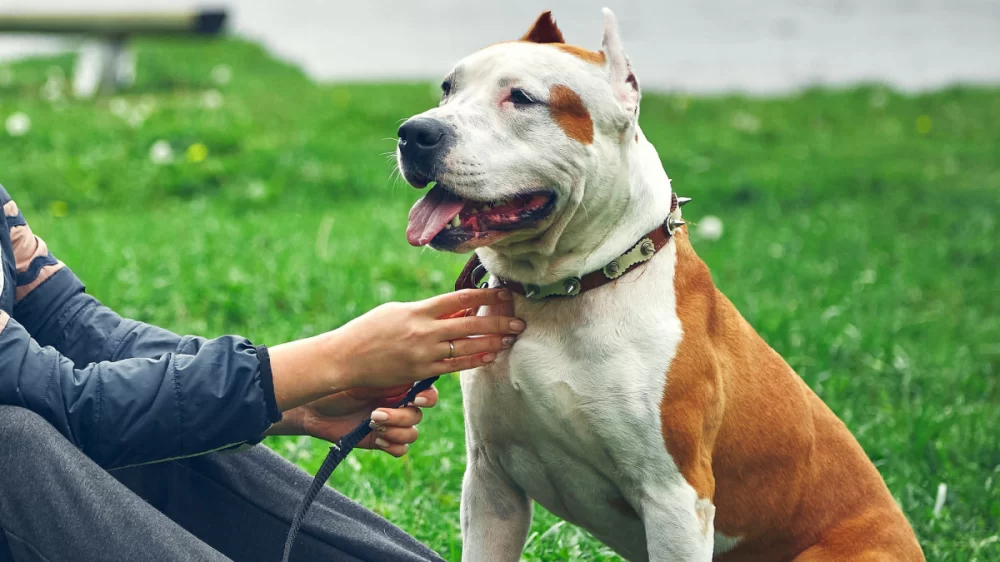- 1. Understanding Overly Protective Dogs
- 2. Why Do Dogs Become Overly Protective?
- 3. Steps to Stop Overly Protective Behavior in Dogs
- 4. The Importance of Training and Socialization
- 5. When to Seek Help from Hidden Brook Veterinary
1. Understanding Overly Protective Dogs
Many dog owners face the challenge of an overly protective dog. While protection instincts are natural, an overly protective dog can cause anxiety for both the pet and the owner. Protective behavior might include growling, barking, or even aggression towards unfamiliar people or animals. This behavior is often rooted in the dog’s instinct to guard its family or territory, but it can sometimes go too far, leading to problems in everyday situations.
Understanding the underlying cause of this behavior is the first step to addressing it. A dog’s protective instincts can manifest in various ways, and as an owner, it’s important to recognize when these behaviors are healthy and when they’ve crossed the line into excessive protectiveness.

1946 S Christopher Columbus Blvd, Philadelphia, PA 19148, USA
See Details2. Why Do Dogs Become Overly Protective?
There are several reasons why a dog may become overly protective. The root cause often involves a mix of genetics, past experiences, and environmental factors. Some common causes of excessive protectiveness include:
- Genetics: Certain dog breeds are naturally more protective than others. Guard dog breeds like German Shepherds, Rottweilers, and Dobermans may display heightened protective instincts.
- Lack of socialization: Dogs that haven’t been adequately socialized during their formative months can develop fear and aggression towards new people, places, or situations. They may protect their owner out of fear of the unfamiliar.
- Past trauma or abuse: Dogs that have experienced trauma or abuse in the past may become more protective as a defensive mechanism. They associate people or situations with harm and react aggressively to protect themselves and their owner.
- Over-attachment to the owner: Dogs that are overly attached to their owner may see anyone as a threat to their bond, which can trigger protective behavior. This can happen if a dog has experienced separation anxiety or has been spoiled and overly pampered.
Understanding the reason behind your dog’s protective behavior will guide you in developing the right approach to addressing it.
3. Steps to Stop Overly Protective Behavior in Dogs
If your dog is displaying overly protective behavior, it's essential to address it early to prevent further escalation. Here are some effective steps to help stop this behavior:
- Set clear boundaries: Establishing clear boundaries in the household can help your dog understand when their protective instincts are appropriate. Be consistent with rules and avoid allowing them to guard spaces, like the door or certain furniture, which can trigger protective reactions.
- Desensitize the dog: Gradually introduce your dog to situations or people that may trigger their protective behavior. This should be done slowly and positively, so the dog learns that there is no danger.
- Teach commands: Reinforce basic obedience commands like "sit," "stay," and "leave it." These commands can help you manage your dog’s behavior and redirect their focus when they become overly protective.
- Use positive reinforcement: Reward your dog with treats and praise when they display calm behavior around new people or situations. Positive reinforcement helps encourage desired behavior while discouraging excessive protectiveness.
While these steps may take time and patience, they can help your dog feel more secure in different situations without feeling the need to be overly protective.
4. The Importance of Training and Socialization
Training and socialization are key factors in managing a dog’s protective behavior. A well-trained dog is more likely to respond calmly to new situations and people, reducing the need for protective behavior. Socializing your dog from a young age—exposing them to various environments, people, and animals—can help them develop confidence and a well-balanced temperament.
Ongoing training helps reinforce positive behaviors, reduces anxiety, and builds a stronger bond between you and your pet. Professional dog trainers can be especially helpful if you're struggling to address your dog’s protectiveness. They can provide guidance on managing aggressive or fearful tendencies and offer tailored solutions for your dog’s specific needs.
5. When to Seek Help from Hidden Brook Veterinary
If your dog’s protective behavior is escalating or becoming dangerous, it may be time to consult with a professional. Hidden Brook Veterinary offers expert behavioral assessments and training recommendations that can help address your dog’s protectiveness in a safe and structured environment. Our veterinarians and behavior specialists can work with you to develop a customized plan for managing your dog’s behavior and ensuring their well-being.
Whether you need advice on training or are concerned about your dog’s behavior, Hidden Brook Veterinary is here to help. Contact us today for support in addressing your dog’s behavioral challenges and building a healthier relationship with your pet.











